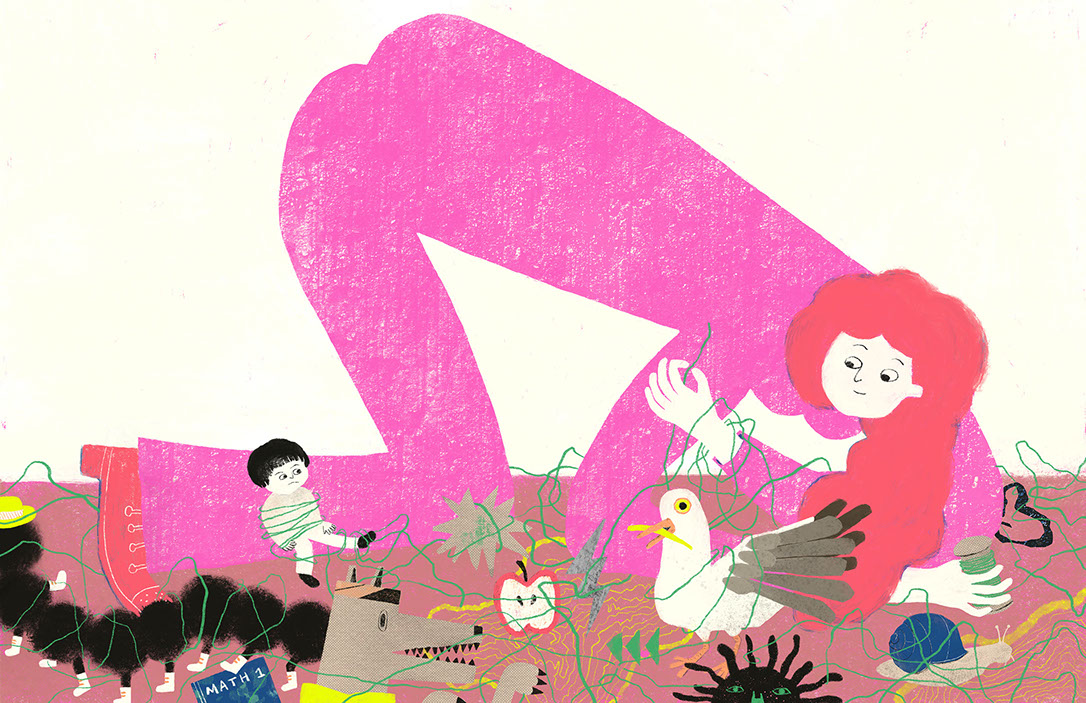Nurturing the Seed of Infinite Potentialities in Every Child

How to Promote
Emotion
Regulation?
By Dr. Ruthie Speidel
Teaching children healthy ways to regulate their emotions starts with teaching them about emotions — what they are, how they feel, and why we feel them. Let’s go through some tips for how we can support children as they navigate the ins and outs of emotions
Think about how emotions are important sources of information
To set the stage when thinking about how we can support emotion regulation, we must first remember that emotion regulation is not the same as suppressing, or hiding, our emotions. In fact, emotions are extremely healthy and are important sources of information for us. For example, emotions can help us tackle challenges and address injustices. They can also alert us when some-thing is wrong and can help keep us safe. Emotions also support our ability to connect and form relationships with others. It is very healthy and important for us to feel a wide array of emotions like joy, curiosity, excitement, anger, sadness, and fear. Emotion regulation is not about avoiding those emotions. Instead, it is about understanding and managing all of our emotions in a way that enables us to achieve our goals and engage positively with others.
Remain calm and confident in the face of the storm
Meet big emotions with calm empathy. Listening and validating children’s big emotions is often a first step to helping children learn to navigate their big emotions. On the contrary, if we answer big emotions with big emotions this often does little more than result in two individuals who are filled with big emotions. But when we meet challenging emotions with calm empathy we serve as a source of sure footing and co-regulation that can help the child establish their own footing to be able to cope with their emotions more healthily.
Talk it out
Reminiscing about past shared emotional experiences in our day-to-day lives is a great way to build a bond while also promoting children’s emotion regulation. Research also shows that reminiscing has great benefits for children’s language and memory development!
During these discussions, try out the ABCD’s of reminiscing:
Ask open-ended questions. Let the child be the navigator! To follow the child’s lead, try to ask more open-ended questions than yes/no questions to follow the child’s lead.
+ Example questions: What happened? I saw a seagull. Oh wow! Where did you see if? I saw it out side of school.
Be descriptive. Expand upon what children share by working together with them to elaborate about the facts of what happened.
+ Tips: Work together to describe the objects, locations, colours, sounds, and smells involved.
+ Example: It was grey and white and really big. And it was eating some French fries that had fallen on the ground. Every time it had a bite, it would make a loud squawk!
Confirm children’s contributions. Confirm and repeat children’s contributions during these conversations to support their agency and to show you are listening.
+ Example: That’s right, that seagull was huge!
Discuss emotions. This includes:
+ Labeling emotions: You were feeling _ _ _ ; How were you feeling?
+ Validating emotions: It’s okay to feel _ _ _ ; That would make me feel _ _ _ too.
+ Linking emotions with their causes: Why were you feeling _ _ _? ; The seagull made me feel happy because it made me laugh with its loud squawking.
+ Discussing signs of emotions: How does it feel in your body when you feel _ _ _? ; I could tell you were feeling sad because your body was droopy and your lips were quivering a bit.
+ Resolving negative emotions: What did we do to make you feel better? ; What could we do next time?
Remember that timing is important
Pay attention to the timing of your emotion-based dialogues. Children learn best when they are regulated and calm. While you are at sea in the middle of a raging storm at sea probably isn’t the best time to have a detailed discussion about what it feels like in our bodies to feel scared. In these cases, it’s often better to wait until the storm has calmed and you are safely on shore again. Similarly, when children are in the middle of expressing a big emotion, it’s often best to prioritize maintaining safety and serving as a calm source of comfort and support. This might look like sitting with a child or rubbing their back as they cry. Later, when they are in a more tolerable emotional state try engaging them in a dialogue.
Emotions don’t always have to be communicated using words
Sometimes it’s really hard for children to use words to express their feelings. This is especially the case for young children who are still learning what emotions are, what causes them, and how it feels when they experience them. When children are feeling a big emotion like anger, sadness, fear, or disappointment, it can feel overwhelming and hard to communicate these feelings. But we don’t always have to use words! We can encourage children to express themselves in a different way, like by drawing or painting how they are feeling in their body, or by using motion or dance to show us how they are feeling. By reflecting and thinking about what an emotion feels like or looks like, children can build self-awareness and become more attuned with their emotions. Let the child choose their method of expression and let them lead the creation.
Model the emotion regulation you want to see in children
One of the most important ways we can support children’s emotion regulation is by modelling self-calming strategies, especially when we are upset in front of children. We recognize that oftentimes this is much easier said than done! The fact of the matter is that children look to us as guides for almost everything, and this includes for how emotions are appropriately managed. Next time you are upset in front of a child, turn it into an opportunity. Try pausing and modelling self-regulation, such as some deep breathing. For example, we might say, “Oh boy. I need to take 3 deep breaths before I respond to that”. Then, take those three deep breaths in front of the child.
Don’t be afraid to make mistakes along the way
If you do lose your temper in front of a child, be compassionate with yourself. Emotions are big for everyone sometimes, even for adults. It is normal and healthy to express our emotions. After an instance where we do lose our cool in front of a child, it can be helpful to circle back to the event later and discuss it together.
You might start by labeling the emotion and its cause: “Remember when I lost my temper in the car this morning? I was angry because another car cut us off when they came into our lane.”
Next, we can validate our emotion while also pointing out a tip for ourselves for the future. “It’s okay that I was angry, but I should have taken a deep breath before I responded. That might have helped me calm down. I will make sure that I do that next time.”
By taking the time to circle back to this event, we are using this as a learning opportunity for ourselves and for children. And by being compassionate with ourselves, we are letting children know that it’s okay to make mistakes and that we can learn from those mistakes and do better in the future.

Let us know what you think about these strategies to promote emotional regulation. Is there something else that works well for your child?
Email us at maltilab.pipo@utoronto.ca,
we‘d love to hear from you!
